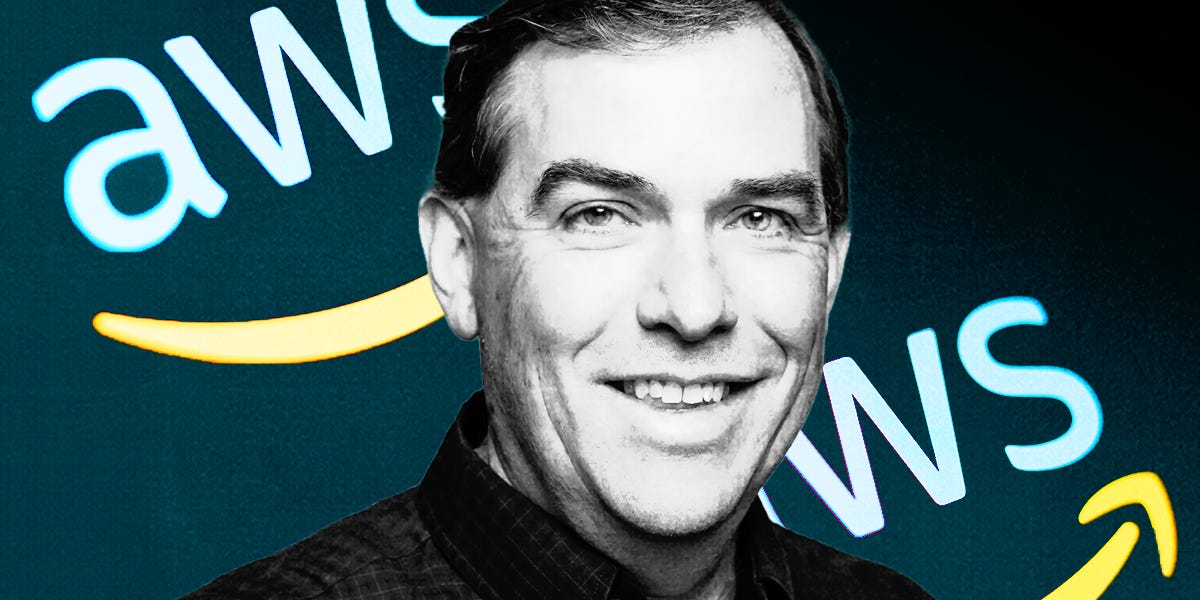At an October all-hands meeting, an Amazon Web Services employee asked executive Matt Garman about the company’s difficult work environment.
The cloud sales chief quickly dismissed the question, saying working at AWS was supposed to be “hard,” according to a transcript of the meeting obtained by Business Insider. Employees should build great services and create a positive work environment at the same time, he said.
“We love that they are hard, that they are challenging, that we go to solve hard problems,” Garman said. “And we need to have people that can perform at their best in order to deliver for customers in that environment.”
Garman’s directness has earned him a “bulldozer” reputation for a laser-focus on achieving business goals ahead of other priorities, one person familiar with his approach told BI. It’s also what just catapulted him to the AWS CEO job, a promotion that makes him one of the highest-profile executives in tech. An 18-year Amazon veteran, Garman will soon be in charge of running a giant cloud computing that needs to figure out how to keep growing at a rapid clip, even as AI competition intensifies.
Garman replaces Adam Selipsky, who became CEO just three years ago. In a note to staff on Tuesday, Selipsky said he planned to spend more time with his family before deciding what to do next. Amazon CEO Andy Jassy said in a separate companywide email that Selipsky had accepted the top AWS job in 2021 under an informal agreement to leave after a few years of grooming his successor. Garman officially starts on June 3.
“Matt has an unusually strong set of skills and experiences for his new role and knows our customers and business as well as anybody in the world. We’re excited to see him and his leadership team continue to invent the future,” Amazon’s spokesperson Patrick Neighorn told BI.
Early concerns
Garman, 48, first joined Amazon as an intern in 2005 when he was a student at Northwestern’s business school. An engineer by training, with industrial engineering degrees from Stanford, Garman went on to spend the next decade-plus running technical teams at AWS.
In 2020, Garman took on a new role as AWS’s sales and marketing chief, a move that surprised some people, according to a former executive who worked closely with him. Garman wasn’t the best public speaker and didn’t seem polished in front of customers, this person said. His blunt feedback and sometimes negative remarks about customers in internal discussions made other salespeople uncomfortable.
Garman essentially had to learn how to be a better salesman, this person said. The people who spoke with BI about Garman asked not to be identified so they could freely discuss his abilities.
Whatever adjustment Garman has made, it appears to have earned the trust of Amazon leaders and investors alike. He’d already started to become AWS’s public face in the months leading up to Tuesday’s promotion, according to several people at the company.
“We view this appointment as a good fit with what we believe to be the company’s focus on customers,” analysts at Mizuho Securities wrote on Tuesday, noting Garman’s experience across engineering, sales, and marketing.
AI woes
Garman inherits a business that is bouncing back from a growth slowdown. AWS generated $25 billion in revenue last quarter, up 17% from the year before. That’s a far cry from the 30% to 40% growth rates AWS saw a few years ago, but still an improvement from last year when it hovered around a record-low 12% pace. Customers are starting to spend more on AWS after closing their wallets in recent years due to the pandemic and an uncertain economy.
AWS is betting AI will drive that growth in the long term. The reality may be more complicated.
For example, to compete with Nvidia’s GPU processors, AWS has released its own homegrown AI chips, called Inferentia and Tranium. It’s unclear so far how successful this move will be, as most AI model developers still prefer using Nvidia’s platform.
“We’re pleased to offer customers the broadest choice of compute, and our Inferentia2-based instances deliver up to 40% better price performance than other comparable Amazon EC2 instances,” Amazon’s spokesperson Neighorn told BI.
Last month, AWS made its Q chatbot publicly available. But an earlier preview launch was rushed and flawed, leaving employees and industry experts to question Amazon’s future in the AI space, BI previously reported. One AWS employee pointed out to BI that Amazon Q was months behind the launch of Microsoft’s AI Copilots.
AWS doesn’t believe any single AI model will dominate the market. So it released Bedrock, a cloud service that gives customers access to models from several providers, including Cohere and Mistral AI.
AWS has also launched its own model called Titan, but it’s not as powerful as models from OpenAI and Google. Amazon also invested $4 billion in Anthropic, a startup that has a top AI model called Claude.
Outside of AI, AWS has struggled in its core startups and small business segments, failing short of sales targets last year, as BI previously reported. Those customers are particularly important for AWS because the company built its early business by embracing that market. Selipsky, AWS’s departing CEO, told employees in February that there was “less startup funding in the world, and so less startup spending on everything, including cloud,” according to a transcript of an internal meeting obtained by BI.
‘One Team’
One area Garman has focused on in recent years is a “One Team” concept within AWS.
A good example of that strategy is a new sales initiative called Delivery Point of View (DPOV), according to an internal document obtained by BI. Under DPOV, AWS software consultants who previously only worked on implementing services are now encouraged to find sales opportunities as well, blurring the line between consultants and traditional salespeople.
Additionally, Garman completed a major organizational shake-up earlier this year that eliminated overlapping roles and redundancy. The new approach prevents different teams from reaching out to the same customer, saving on costs to close a deal, according to people familiar with the change. The AWS sales and marketing team is now largely organized by industry verticals, such as finance, media, and technology, as opposed to the old regional-based model, these people said. Some people applauded Garman for taking the initiative to fix a problem that was long overdue.
Garman’s sales and marketing organization was also one of the first teams to roll out a new career development program called “Growth Conversations,” a person familiar with the program said. The 1-on-1 program gives employees the opportunity to speak with their managers about career opportunities and milestones to pursue in a given year.
Last month, when Amazon Q publicly launched, Garman wrote an email to his team, calling for every employee to work as a team in promoting the product.
“Let’s spread the word and amplify this news on social media to your networks so customers know that AWS is the best place to innovate with generative AI,” Garman’s email said. “Now, let’s go win!”
Do you work at Amazon? Got a tip?
Contact the reporter, Eugene Kim, via the encrypted-messaging apps Signal or Telegram (+1-650-942-3061) or email ([email protected]). Reach out using a nonwork device. Check out Business Insider’s source guide for other tips on sharing information securely.
Read the full article here





